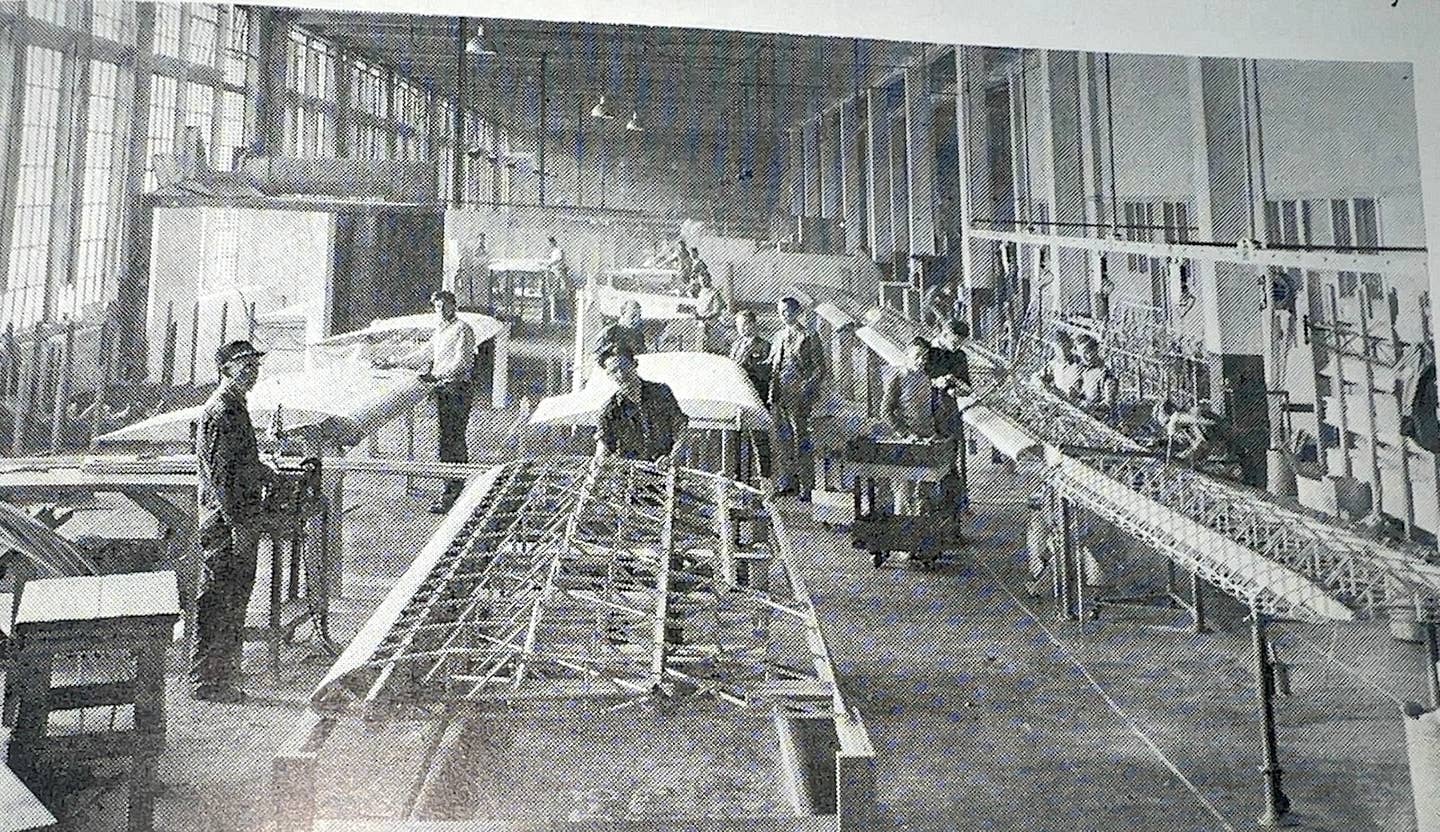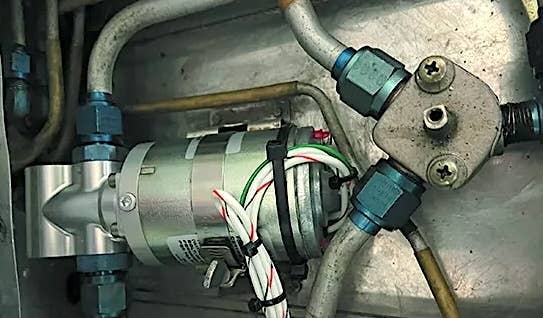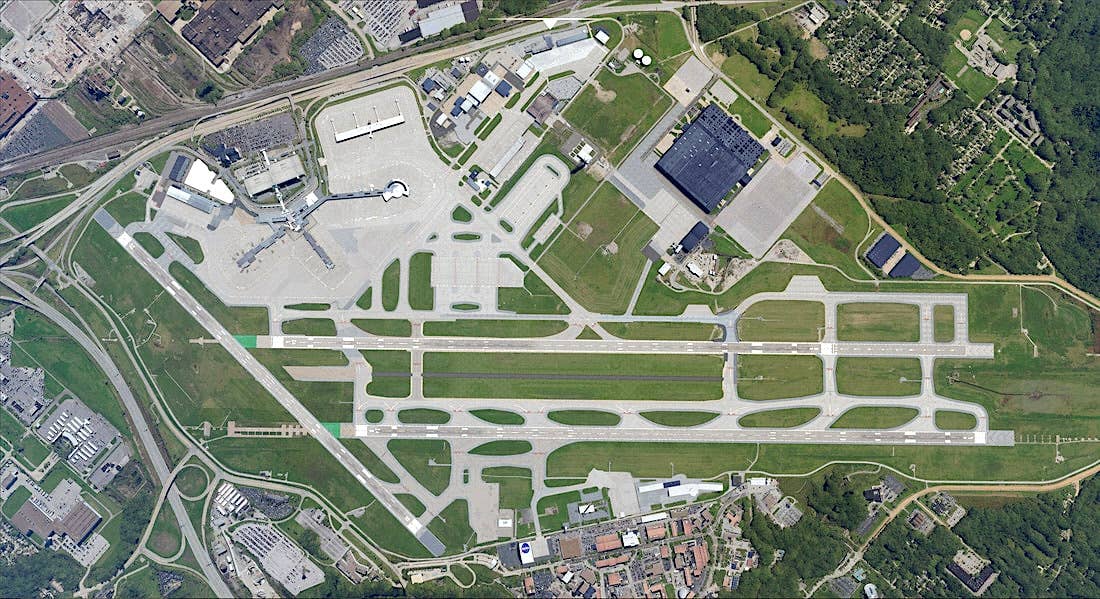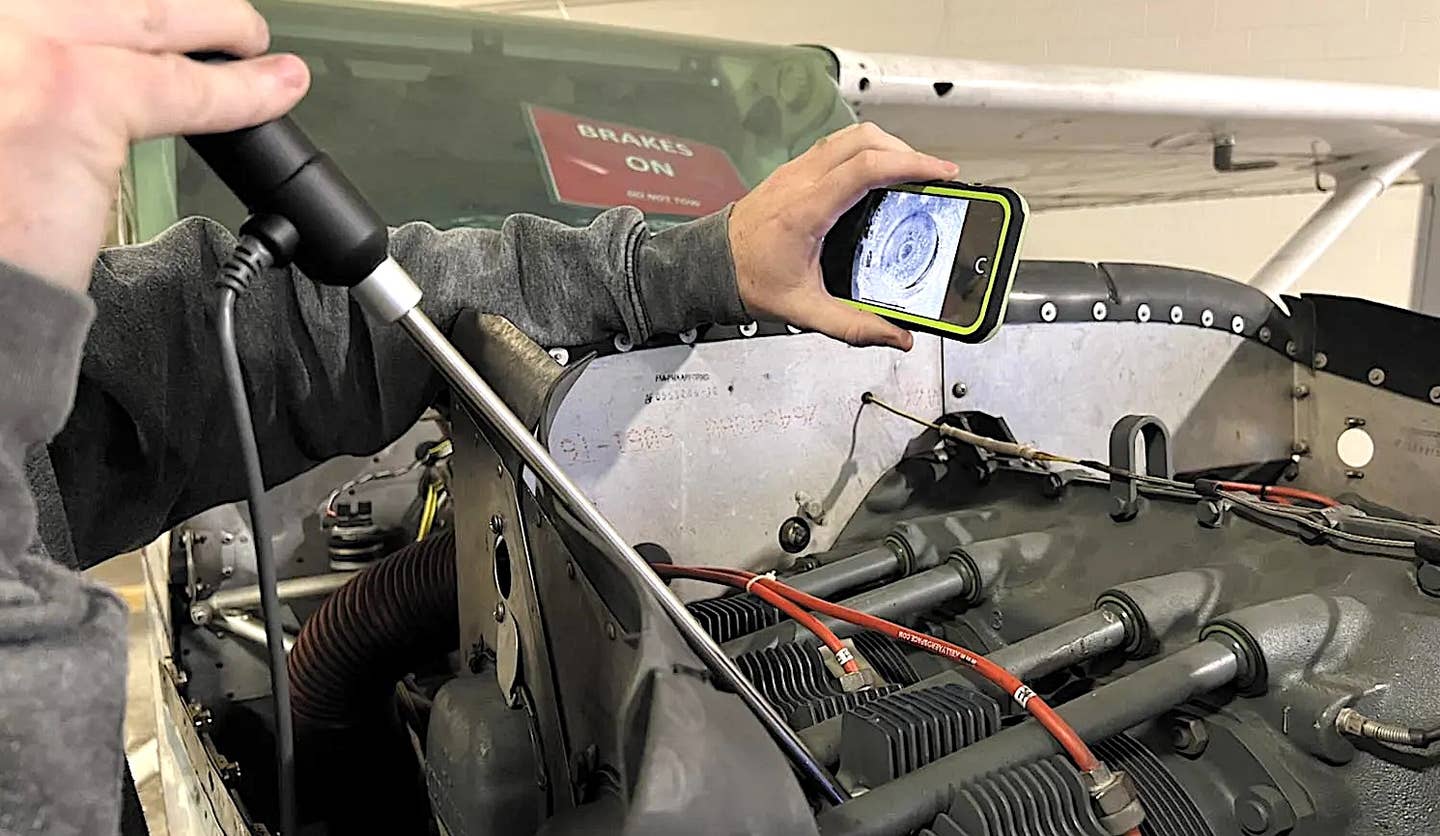Pelican’s Perch #67:Analysis of an In-Flight Engine Failure
GA engine failure captured digitally in full color! AVweb’s John Deakin shows us engine-monitor data from an aircraft that lost power on takeoff just after an annual inspection. As you might expect, John disagrees with the engine manufacturer’s post-mortem.
I am really excited about our newfound capability to record extensive data from real, live, running engines in real airplanes. We've been doing this for several years, but the data is getting more and more sophisticated, and we're learning to make better use of it. We can now take this recorded data, quickly plot it on full-color graphs, picking and choosing whole flights or selected short parts of a flight, publish those charts here on the 'net or on paper, and then turn right around and make real-time animated displays for presentation in PowerPoint. We make full use of all these in our seminars, first showing exactly what the JPI showed in real time, then showing the graph, and then explaining and taking questions.These are absolute dynamite in a room full of people concerned about how to operate these magnificent engines. No one dozes when these are running!We are now beginning to get data files from the user community showing major failures! I've just received several wonderful files and pictures showing the flights just before a major malfunction, the malfunction itself, and follow-up pictures of the parts involved. The owner has very kindly given permission to show it all, and I would like to present it here pretty much as he saw it happen. Please think about this as you read, and think what you would have thought and done as it happened. This pilot handled a major emergency in fine fashion, given "what he knew, and when he knew it."Sheldon "Shelly" Holson is a retired businessman from Norwalk, Conn. He owns a 1994 Beechcraft A36 Bonanza with the fine IO-550 engine by TCM. He began flying in 1966, and has owned a variety of aircraft, including a Baron, two Dukes (one was destroyed in a tornado), and now the A36. He flew a lot on business, and takes regular recurrent training every six months.
The Event
According to the recorded JPI data, flights prior to the incident were normal (see chart), and then the airplane went in for an annual at the Danbury, Conn., airport (DXR). The failure incident occurred on the first flight after the annual. He reports that he did a very thorough preflight and runup, and everything appeared to be normal. He departed Runway 17, which requires flight down a valley with "good-sized hills" on either side. At about 500 feet he noted a slight odor, which he thought at the time might have been from some sort of solvent used to clean out the engine compartment. He now thinks it was the #5 cylinder, overheating. I have no idea what the smell might have been, but his thoughts sound reasonable.Shortly after that, he noted a slight abnormal vibration. At about 1,200 feet, the vibration increased. He noted that the JPI instrument was showing an alarm (a blinking display), and that the #5 cylinder was showing a problem. He very wisely did no further troubleshooting, informed the tower of his problem, turned around at about 2,000 ft AGL, and landed straight in. Nicely done. VERY nicely done. No "knee-jerk" panic, just thoughtful, timely, and decisive action.They immediately opened the cowl, and found the #5 cylinder was cold to the touch. A compression check showed zero. The data was downloaded from the JPI EDM-700, and he was kind enough to send it to me, along with data from two previous flights.
Previous Flight
A glance at the previous flights is sufficient to see that there was no malfunction showing on the engine monitor. Here's one:
Like almost all the engines "out there," the sea-level full-power fuel flow, while set pretty close to TCM's recommendations, is really too low at just under 27.0 GPH. See the sidebar for more on this.Immediately after this normal takeoff, the EGTs rise to 1374F, and the CHTs rise to values between 352F and 402F. Any EGT over the low 1300s for a normally aspirated engine at full power is too high. No, the EGT itself is not harmful, it's just that we know from lots of data, those EGTs, when ROP at high power, mean internal combustion pressures are too high, and CHTs in the high 300s confirm it.For your normal, sea-level, standard-day takeoff, EGTs of about 1250 to about 1320 should be the normally expected range. No good reason EVER to see a takeoff CHT over 400F, and much lower should be normal. So, the observed values on this engine failure are MUCH too high, but are very, very common in the vast majority of the general aviation fleet. The high CHTs exacerbate the situation when poorly installed valves are present.It is amazing to see the benefit of setting up the fuel flow just a little more than the SID 97-3 book spec. It makes only a small difference in power output, perhaps reducing power by 1% or 2%.(Note that I am talking here of REAL fuel flow to the engine, as measured by an accurate fuel FLOW system, not the dreadful factory fuel "flow" gauges that are really fuel PRESSURE, with an attempt at marking them as "flow." Who knows what you're getting, with those!)This slight HP loss from a "proper" mixture is probably the key to why the OEM recommends such a low fuel flow. If they specified the proper amount, they'd have to advertise the engine as a 290-hp engine, and of course, that might impact sales. That just wouldn't do. If you manually lean the IO-550 to about 22 GPH, you can pull up to 320 hp , but let's just say that TBO would suffer -- a lot! Even marketing knows that's not a good idea.Adding a bit more fuel (side bar) will cause the flame fronts inside the combustion chamber to slow down, very effectively moving the peak pressure a few degrees more past top dead center, reducing internal combustion chamber pressure and temperatures by a useful margin that is much more consistent with extended engine life.Mechanics (and owners and pilots) everywhere need to learn that setting the takeoff fuel flow on the high side is the "more conservative" approach. Most of us spend our whole careers staying "below" redlines, or "away from" redlines of all kinds, but this one is a major exception. I believe the fuel flow redline is a MINIMUM value (for sea level takeoff), and even that minimum is too low. One of our APS class participants just attended one of TCMs courses for mechanics and reports that TCM is also telling people to treat the 97-3 as minimum fuel flows. If that report is true, then maybe some progress is being made!Did that inappropriately low normal takeoff full power fuel flow cause the event that followed the annual? Probably not, but then again, it may have contributed. Had the fuel flow been set up a bit, it might have broken the "causal chain," and the event MIGHT not have happened at all. It's impossible to say, of course.
The "Failure Flight"
Here's the chart. Take a look at this, and see if you can puzzle it out.
Manifold Pressure (black) and fuel flow (red) are both multiplied by 10, and RPM (blue) is divided by 10 for better scaling on this chart. Those three parameters and CHT are scaled to the numbers on the right side of the chart. EGT and DIFF are scaled on the left side.Each EGT trace matches the color of its respective CHT trace, with the key #5 cylinder shown in brown.After the runup, the engine RPM was maintained at 1600 RPM for almost two minutes, probably while waiting for takeoff clearance. I think this RPM is a bit on the high side, it heats the engine more than necessary, makes a lot of noise and prop blast, but it's a very common practice. I prefer to throttle back to about 1,000 RPM or a bit less. Alternators will usually put out adequate power at that RPM, and I cannot think of a good reason to use more.Now, look at the EGT trace for the #5 cylinder! During this hold, the EGT fluctuated, and rose from 1262F to 1354F. Not one pilot in a thousand would have caught this, but if the monitor had been left in "Normalize" mode, that would have been enough to drive the #5 graphical bars off-scale!A very thorough mag check might have also alerted the pilot that something was wrong, but again, not one pilot in a thousand knows how to do one with a modern engine monitor. This will probably be the subject of a future column.The #5 EGT drops to match up with the rest of the pack at the moment takeoff power was applied. This would seem to indicate that the plug returned to normal for a short time.At a glance, and with no information other than this data, my first impression was of a valve sticking open a bit during runup, then again after takeoff. However, with a valve failure, the CHT does not rise as this one did.With that first faulty analysis out of the way, it becomes clear that we have a classic case of pre-ignition. The very rapid rise of the #5 CHT, together with a very minor rise in EGT, is the giveaway. I believe the pre-ignition began first, and later included a component of detonation as things heated up. Ugly on top of ugly.At time 15:46:52, promptly with the application of full power, the #5 CHT starts sharply upwards from 285F, and rises to a shocking 569F in one minute, thirty seconds. The EGT and CHT then plummet, indicating combustion has ceased due to the hole in the piston. It is virtually certain that pre-ignition and only pre-ignition could cause the hole in the piston in that short period of time.
|
Update from John Deakin, Feb. 2012: I'd like to correct what I wrote above, while keeping it for historical accuracy. In 2003, when I wrote this article, we were just learning about the display on an engine monitor of detonation and preignition, and I recall a good deal of heated (you should pardon the pun) discussion on it. Today, I would say, "Typical preignition is indicated by an initial drop in EGT, while light and medium detonation shows little or no change in EGT. Preignition causes a very rapid -- often catastrophic -- rise in CHT, unless stopped by going rich on the mixture, or pulling off power to "break" the event. Light and moderate detonation may cause some rise in CHT, but often that may not be noticed unless it progresses on to prolonged medium to heavy detonation or preignition. Other factors may, as in this case, modify the typical initial presentation of a preignition event, as seen on the engine monitor and in the downloaded data. In this case, the spark plug ceramic had failed and it is likely that debris from the ceramic was causing the exhaust valve not to fully close. This resulted in the unusual and variable pattern in the #5 EGT seen in this data." I've asked George Braly to elaborate on this new research. |
|
Addition from George Braly of GAMI, Feb. 2012: The #5 EGT started "wandering" for this flight before takeoff. Further, it is true that the #5 EGT started up slightly before the preignition event. This is significant because, by its very physical nature, a preignition type of event will exhibit a falling EGT, not a rising EGT as seen here. Since this article was first written in 2003, we have subsequently seen and collected data on dozens of preignition events. Over the last year (2011 through early 2012), we have been able to correlate the engine monitor downloads with actual preignition as documented by in-flight pressure transducers. There is no doubt that the "typical" preignition type combustion event is accompanied by a falling EGT on the affected cylinder. In fact, the physics of the preignition combustion event dictate that the EGT must decrease as part of the event ... unless there is some other confounding factor. So what is the confounding factor? The evidence points to the spark plug. If you click and expand the picture of the spark plugs (below), you will notice that part of the ceramic nose core is missing on the upper spark plug on the left side of the photograph. The most likely analysis of what took place is this: 1) During taxi, the spark plug began to shed a piece of ceramic. At some point just after 15:44:46, a piece (possibly even just ground ceramic "grit") of that broken ceramic fragment from the spark plug became lodged around the seat of the exhaust valve and that small leak in the exhaust gasses caused the otherwise unexplained rise in #5 EGT during taxi. Immediately after power up, either the spark plug (which had lost its thermal protection due to the missing cracked insulator piece) or even a piece of the ceramic floating around in the combustion chamber turned red hot and promptly started the preignition sequence associated with the very rapid rise in the #5 CHT. While this was going on -- and on an intermittent basis -- some of the hard ceramic pieces continued to randomly interfere with the complete closing of the exhaust valve, which resulted in the erratic #5 EGT pattern. An alert pilot might notice the unusually high #5 EGT during taxi. Maybe. But the pilot has to be routinely comfortable with the appearance of the "normal" EGT display in order to appreciate something like this event and do so in time to take effective action and abort the takeoff. |
The Aftermath
| (Click photos for larger versions) | |
 | |
| Damaged Piston | |
 | |
| Damaged Cylinder Walls | |
 | |
| Damaged Cylinder Top | |
 | |
| The upper spark plug is on the left and the lower plug is on the right. |
The #5 jug was pulled, and a hole was found in the piston, the classic "blown jug." There was "significant" aluminum in the filter, and throughout the engine. The plugs were the massive electrode type. They were destroyed, and plugged with aluminum.The owner called TCM. They told him "the engine detonated," and that his choices were an overhaul, a reman, or a new engine, making it a very expensive annual.This was probably NOT detonation, at least at first. Detonation would cause a much more gradual rise in CHT.
What is Detonation?
Almost anyone can recite the standard response to this question. "Detonation is the spontaneous ignition of the fuel/air mixture after the spark occurs." Like many, I always thought that meant ALL the remaining fuel/air mixture "explodes" at once. It was only a couple years ago that I gained a better knowledge of this event.The FAA has established three levels of detonation, light, medium and heavy, with mathematical models for each. Now, ask yourself: If there are different levels of detonation, how can it be that all the fuel-air mixture explodes at once? But, how can it not? As the King of Siam said, "'Tis a puzzlement."The mixture inside the cylinder is simply not a perfect "mix." There are "pockets" of mixture that are "too rich" and other pockets that are "too lean," at the microscopic level. Others are just perfect, and these are very easy to auto-ignite. Sounds a little Goldilocks and the three bears, I know. As detonation begins, those little "perfect" blobs explode all by themselves, with heat from compression, infrared energy from the flame fronts (the flame fronts travel much slower than the speed of sound, the pressure waves travel at the local speed of sound, and the infrared heat travels at the speed of light, meaning that conditions in the combustion chamber are chaotic, at best!)If detonation stabilizes with these small pockets exploding here and there, you have "light" detonation, and this is the ping you used to hear in older car engines when going uphill with a too-low RPM. This light detonation is essentially harmless. One could argue that it might be beneficial as it could clean off deposits inside the combustion chamber. We can even speculate that an engine might even go to TBO with light detonation, but I'd rather not run my engine there, thank you very much. It may be harmless, but it's a little too close to the hairy edge for my taste.Medium detonation is just "more of the same," with larger blobs of mixture lighting off. Heavy detonation is a "WHOLE LOT more of the same," with most, or all the remaining mixture burning quickly. Purists don't like the term "exploding," but heavy detonation is close enough for me! Detonation is like the hammer of Thor, beating on the top of the aluminum piston.Detonation, by definition, occurs only AFTER the normal spark event has occurred. Poor-quality fuel (or insufficient octane), or improperly advanced timing (an early spark) will cause detonation. It takes time to develop, for it must start as "light," work up to "medium," and finally, to "heavy."Fact is, it's VERY DIFFICULT to get detonation to occur in any of the common normally aspirated big-bores. If CHTs are kept below 400, it is virtually impossible. Turbo-charged engines CAN be made to detonate, but you still have to work at it. The big magnificent TIO-540, arguably the most critical engine in the fleet, will be very close to, or into detonation when operated as Lycoming suggests for climb (40", 2400 RPM, and leaned to 1500 EGT).
What is Preignition?
Pre-ignition is the ugly cousin of detonation. It is never beneficial, and can cause failure in seconds. As the name implies, preignition occurs before the normally anticipated spark event. Pre-ignition starts a fairly normal flame front, but early, often very early. This forces the pressure higher before top dead center, and that rapid rise in pressure instantly drives the temperature up. At top dead center, the pressure from pre-ignition can reach 1500 to 2000 PSI, rather than a normal maximum of 900 to 1100 PSI. That extremely excessive peak pressure causes all kinds of havoc. Among other things, it can damage internal components, like valves, spark plugs and rings, and it will quickly eat its way through the aluminum piston head.Pre-ignition is most often caused by some projection, some sliver of metal, or something inside the combustion chamber that can be heated white hot during the combustion event, and that spot must remain at very high temperature all the way through the subsequent power, exhaust, intake, and compression strokes. This projection acts just exactly like the glow plug in a model engine.One cause is a "helicoil tang." Cylinders are made of soft aluminum. Helicoils are steel inserts, into which the spark plugs can be screwed. After inserting the helicoil it is not unusual to have small, sharp slivers of metal, which must be cleaned off carefully.For completeness here, I'll mention that carbon deposits in the combustion chamber can heat up and cause preignition, but bluntly, if the engine is run properly, there should not be any carbon deposits. These come from operating exclusively on the rich side for many hours.
Likely Culprit -- The Spark Plug
A damaged spark plug can lose its capacity to transfer heat from the ceramic and then the ceramic insulator and tip can become unacceptably hot inside the cylinder (somewhere up around 1600F, rather than a normal 1100 to 1200F).When this happens, the spark plug itself can become the source of the pre-ignition event.Spark plugs take fearful punishment in operation with the repeated pressure pulses of combustion. But make no mistake: Outside that normal operation, they are exceptionally fragile. They must be handled more carefully than eggs. Dropping them, even as little as one inch onto a hard surface, can damage them by cracking the ceramic, with a later plug failure ruining your day! Mechanics and owners must realize this, and if any spark plug experiences even a minor shock, it must be discarded. Using a damaged plug can destroy an engine, as in this case, not to mention the further risk to the airplane and pilot. Old-time airline mechanics made it a policy that if they dropped a plug from ANY distance, onto ANY surface, they immediately used a ball peen hammer to beat the electrodes and threads to death, making it impossible to use the plug.Even if a mechanic treats the plugs like nitro, that's no guarantee that someone won't walk by and brush one off the table, or even just bang one into another, without saying anything. That's the reason good mechanics will have a spark plug holder to protect them. I once knew a mechanic who wouldn't let anyone near "his" plugs, and got quite cranky when I offered to help reinstall them.Further, most spark plugs are manufactured in two sections, and if the mechanic gets a spark plug socket wrench a little out of alignment as he tightens it, the two sections can shift a little, or flex microscopically, and that can crack the ceramic inside. Ceramic doesn't flex as steel does.(Nothing in this column should be interpreted as critical of Sheldon's mechanic. He probably did everything right. However, a plug could have been damaged without his knowledge, one plug might have failed from a long-time defect, a helicoil tang might have finally peeled off, etc. All these would have been even worse with the low fuel flow, and like many mechanics, he is probably unwilling to set the fuel flow a bit higher than spec.)Plugs are cheap, engines expensive. Lives even more so. We are also finding that even brand-new plugs right out of the box can be defective. They will probably pass the standard shop test by sparking properly under air pressure of 80 to 150 PSI. But install them in the engine, and about one out of 20 will not pass the LOP in-flight mag test. One more of that 20 will probably fail the LOP mag check within 50 hours, and it should be discarded, too.Many thanks to Sheldon for so generously allowing me to use his data (and his name) in a way that he and both I hope will increase aviation safety, and pilot/mechanic knowledge.Be careful up there!








